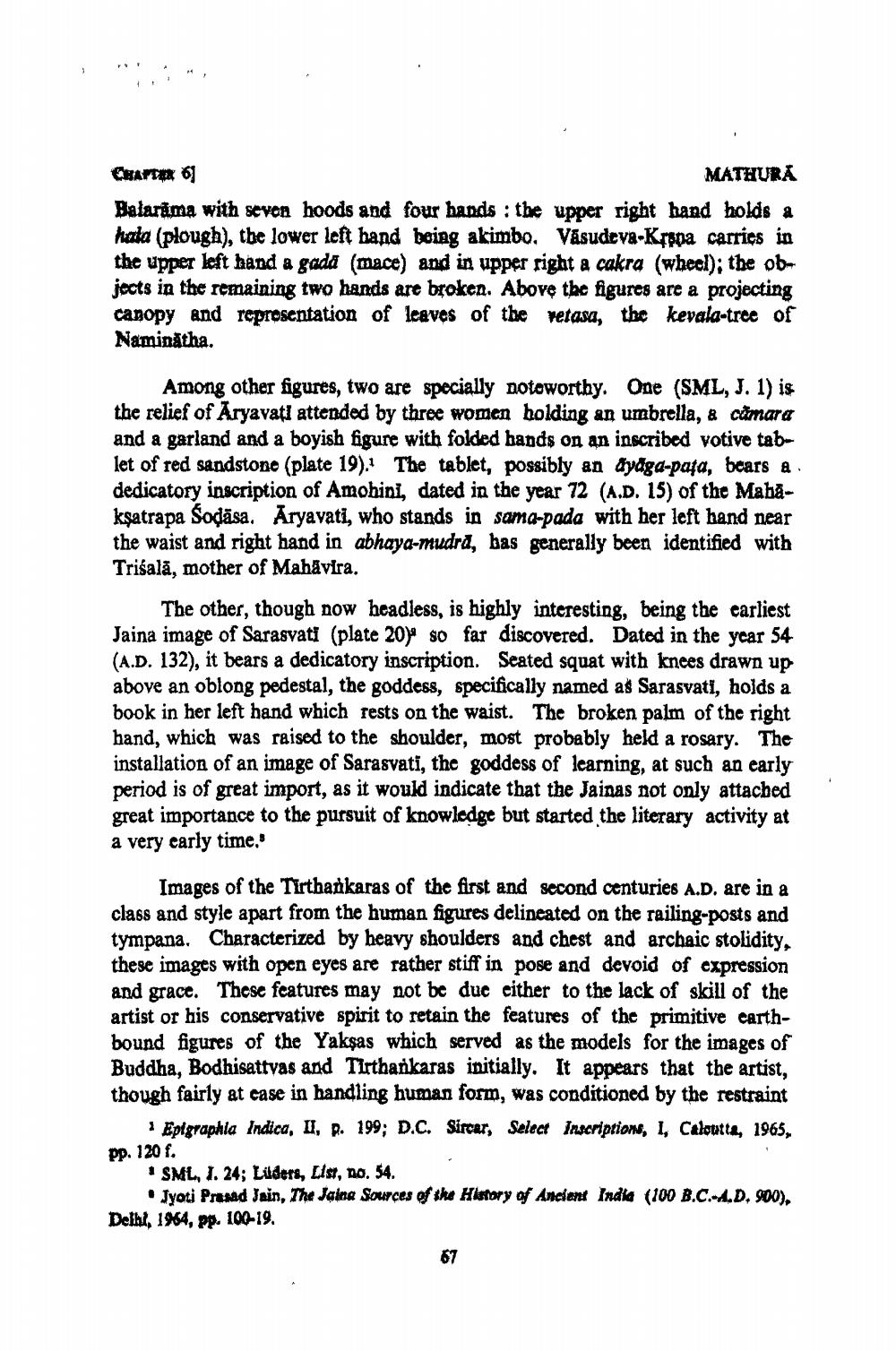________________
CHAPTE 61
MATHURA Balarama with seven hoods and four hands : the upper right hand holds a hala (plough), the lower left hand being akimbo. Vasudeva-Krapa carries in the upper left hand a gadā (mace) and in upper right a cakra (wheel); the ob jects in the remaining two hands are broken. Above the figures are a projecting canopy and representation of leaves of the retasa, the kevala-tree of Naminatha.
Among other figures, two are specially notoworthy. One (SML, J. 1) is the relief of Aryavati attended by three women holding an umbrella, & cumara and a garland and a boyish figure with fokled hands on an inscribed votive tablet of red sandstone (plate 19). The tablet, possibly an dydga-pata, bears & . dedicatory inscription of Amohini, dated in the year 72 (A.D. 15) of the Mahakşatrapa Sodāsa. Aryavati, who stands in sama-pada with her left hand near the waist and right hand in abhaya-mudra, bas generally been identified with Trišalā, mother of Mahävira.
The other, though now headless, is highly interesting, being the carliest Jaina image of Sarasvati (plate 20) so far discovered. Dated in the year 54 (A.D. 132), it bears a dedicatory inscription. Seated squat with knees drawn up above an oblong pedestal, the goddess, specifically named as Sarasvati, holds a book in her left hand which rests on the waist. The broken palm of the right hand, which was raised to the shoulder, most probably held a rosary. The installation of an image of Sarasvati, the goddess of learning, at such an early period is of great import, as it would indicate that the Jainas not only attached great importance to the pursuit of knowledge but started the literary activity at a very early time."
Images of the Tirthankaras of the first and second centuries A.D. are in a class and style apart from the human figures delineated on the railing-posts and tympana. Characterized by heavy shoulders and chest and archaic stolidity. these images with open eyes are rather stiff in pose and devoid of expression and grace. These features may not be duc either to the lack of skill of the artist or his conservative spirit to retain the features of the primitive carthbound figures of the Yakşas which served as the models for the images of Buddha, Bodhisattvas and Tirthankaras initially. It appears that the artist, though fairly at case in handling human form, was conditioned by the restraint
Epigraphia Indica. II, R. 199; D.C. Sircar, Select Inscription, I, Caloutte, 1965, pp. 120 f.
* SML, I. 24; Liders, Lisy, no. 54.
• Jyoti Prumad Jain, The Jaine Sources of the History of Ancient India (100 B.C.-A.D. 900). Dethl, 1964, pp. 100-19.




